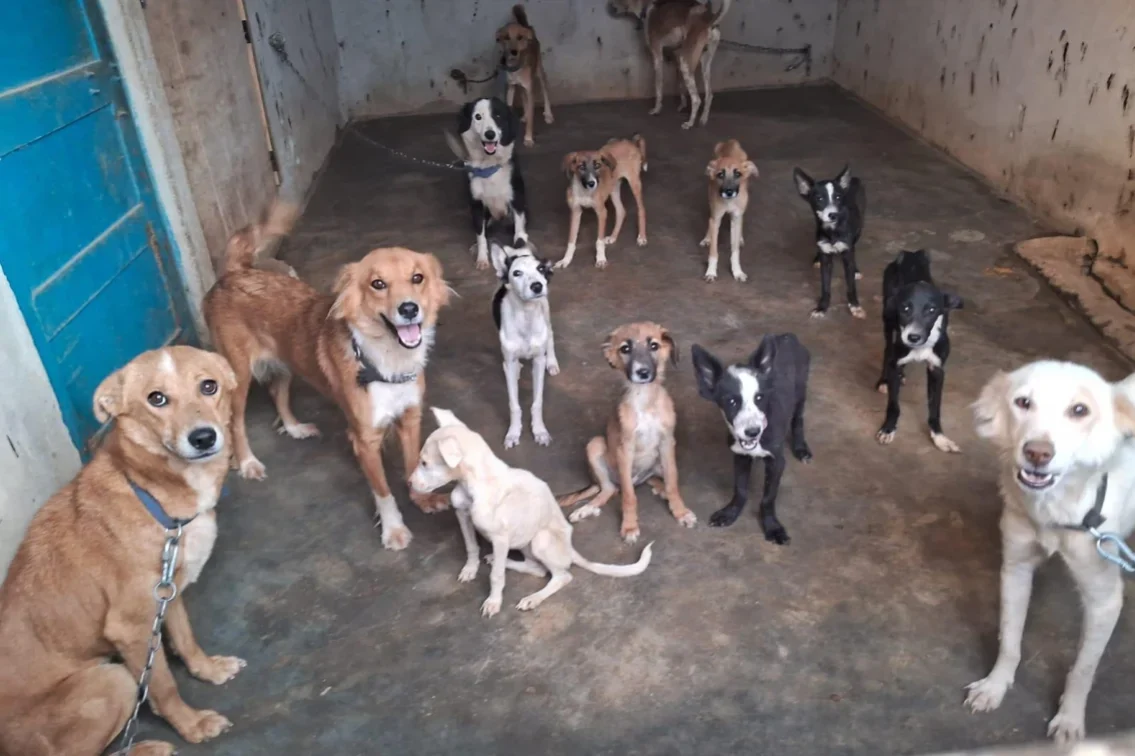Identification and Treatment of Mange: Sarcoptic (red) & Demodectic (demodecosis) mange
Mange is a type of inflammatory skin disease caused by tiny parasitic mites on dogs. Nearly all dogs carry mites in small numbers throughout their lives. Generally, a dog’s immune system is sufficient to keep the number of mites low and prevent noticeable symptoms. In cases of mange, however, the population of mites grows out of control. Large colonies of mites can cause skin lesions, hair loss, and even immune system problems.
Dogs can contract two forms of mange — sarcoptic mange and demodectic mange. Though both can be serious, the two forms of the disease differ somewhat in the symptoms they present.
Identification and treatment given here is only a guideline. Treatment should begin after a skin scraping has been checked under a microscope by a vet. The treatment & medication may differ on the size and kidney condition of the dog – this is the treatment and method that we use.
A Sneak Peek into Our Charity for Dogs – VOSD has rescued 8,000+ dogs, given 250,000+ state-of-the-art free treatments
Sarcoptic mange
Sarcoptic mange usually causes intense itching. The dog may relentlessly scratch or chew at its skin to relieve the itch. The dog’s skin, irritated from the constant scratching and biting, can easily become infected. The itching can even be so severe that it distracts the dog from necessary behavior like eating, drinking, and resting.
Severe cases of sarcoptic mange that result in secondary infections from bacteria or yeast can cause a white, crusty surface to form on the dog’s irritated skin. In addition, dogs with severe secondary infections will also often suffer weight loss, run a fever, and/or have enlarged lymph nodes.
While sarcoptic mange itself can’t kill a dog, the dog’s health can deteriorate quickly if it gets a serious infection or stops eating or sleeping. Mange may then be fatal, from secondary infections causing organ failure and shock.
-
Checking for sarcoptic mange: The pinnal-pedal reflex test.
-
Take one of the dog’s ears in your hand. Hold the floppy part of the ear between your thumb and index finger.
- Use your thumb and index finger to rub the dog’s ear from both sides. While you do this, keep your eyes on the dog’s hind leg on the same side as the ear you’re rubbing.
- Look for an itching motion. You’re looking for a movement in the dog’s hind leg like it’s trying to reach up to scratch its ear. If you see this, your dog probably has sarcoptic mange.
-
If it does that is a good reckoner that the dog has mange.
Demodectic mange
Demodectic mange is caused by a tiny mite, Demodex canis, too small to be seen with the naked eye. Nearly all dogs acquire mange mites from their mother during the first few days of life. These mites are considered normal skin fauna when present in small numbers. They produce disease only when an abnormal immune system allows their numbers to get out of control. This occurs primarily in puppies and in adult dogs with lowered immunity. A high incidence of mange in certain bloodlines suggests that some purebred dogs are born with an inherited immune susceptibility.
Demodectic mange occurs in localized and generalized forms. The diagnosis is made by taking multiple skin scrapings and looking for the mites. Demodectic mites are usually easy to find.
-
Localized Demodectic Mange
This disease occurs in dogs under 1 year of age. The appearance of the skin is similar to that of ringworm (as in a patch). The principal sign is thinning hair around the eyelids, lips, and corners of the mouth, and occasionally on the trunk, the legs, and the feet. The thinning progresses to patches of ragged hair loss about 2.5 cm in diameter. In some cases the skin becomes red, scaly, and infected.
- Generalized Demodectic Mange
Comparison and treatment of mange
|
Sarcoptic Mange (red mange) |
Demodectic Mange |
|
|
Organism |
Infection of the skin with the microscopic, parasitic mite Sarcoptes Scabei. |
Overgrowth of mites that are normally found in small numbers in a dog’s skin. Demodectic mange is usually diagnosed in young dogs without fully functioning immune systems, or in dogs that are otherwise immuno-compromised. |
|
Communicability |
Sarcoptic mange is contagious, and most dogs catch the disease via direct contact with an infected individual. People and cats can also be transiently infected. |
Demodectic mange is not contagious. |
|
Typical Symptoms |
|
|
|
Diagnosis |
|
|
|
Treatment |
For very severe cases
Milder cases
|
|





